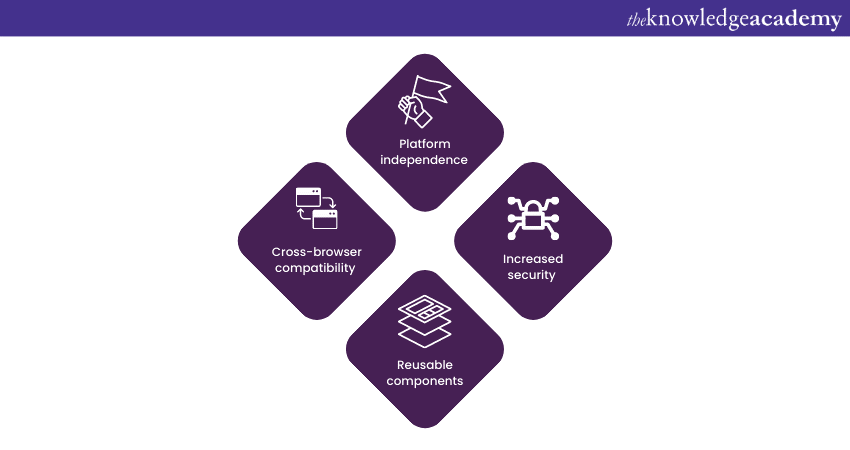We may not have the course you’re looking for. If you enquire or give us a call on 01344203999 and speak to our training experts, we may still be able to help with your training requirements.
Training Outcomes Within Your Budget!
We ensure quality, budget-alignment, and timely delivery by our expert instructors.

Java, a versatile and influential programming language, has left an indelible mark on the world of software development. From its inception to the present day, Java's impact on modern technologies has been undeniable. Understanding the History and Evolution of Java can help us appreciate its significance and the profound changes it has brought to the software landscape.
According to Indeed, the median annual salary of a Java Developer in the UK is £68,869. If you are interested in working with Java, then understanding its origin and history is crucial. In this blog, you will learn about the History and Evolution of Java and its versions, along with its influence on modern technologies.
Table of Contents
1) What is the history of Java?
a) History and Evolution of Java’s name
b) Goals and objectives
c) Influences from C++
d) The Java Virtual Machine (JVM)
e) The initial release
f) Applets and web development
2) Evolution of Java versions
3) Java's influence on modern technologies
4) Conclusion
What is the history of Java?
Java, one of the most widely used and influential programming languages, had its beginnings in the early 1990s. The story starts at Sun Microsystems, where a talented team of engineers, led by James Gosling, set out to develop a new language that could address the challenges posed by embedded systems. Let’s take a look at some more interesting History and Evolution of Java.
History and Evolution of Java’s name
The project initially went by the name "Oak," reflecting the team's fondness for an oak tree outside Gosling's office. However, as destiny would have it, the name "Oak" was already in use, leading to the search for an alternative. This search ultimately led to the name "Java," inspired by the Java coffee that the team often enjoyed.

Goals and objectives
Java's primary goal was to create a language that could be used to program consumer electronics, such as VCRs and televisions, which were becoming more sophisticated and required smarter software. The team wanted a language that would be easy to use, portable, and capable of running on different types of hardware.
Influences from C++
One of the early design decisions that shaped Java was its similarity to the C++ programming language. It borrowed many of its syntax and features from C++, making it familiar to developers already familiar with that language. However, it was intended to be simpler and more user-friendly, with a strong emphasis on platform independence.
The Java Virtual Machine (JVM)
Platform independence was a crucial aspect of Java API design. The team wanted to create a language that could run on any device or system without modification. This led to the development of the JVM, which allowed its programs to be executed on any platform that had a JVM implementation.
The initial release
The team's efforts finally paid off, and in 1995, Java 1.0 was officially released to the world. From the outset, it showcased its "Write Once, Run Anywhere" (WORA) capability, a revolutionary concept that lets you write code once and run it on any platform that supports it.
Applets and web development

The introduction of Java Applets further solidified Java's position as a groundbreaking technology. They were small applications that could be embedded in web pages, providing interactive and dynamic content. This innovation opened up new possibilities for web development and enhanced the user experience on the internet.
Elevate your web development skills with our Web Development Using Java Training. Sign up now!
Evolution of Java versions
Java, since its inception, has undergone significant evolution through a series of version releases, each bringing new features and improvements to the language. Let's take a brief look at the History and Evolution of Java versions:
Java 1.0 (January 1996):
Java 1.0 marked the initial release of the language, providing the foundation for its widespread adoption. It introduced core features like the Applet API and Abstract Window Toolkit (AWT).
Java 1.1 (February 1997):
Java 1.1 brought several enhancements, including inner classes, JDBC (Java Database Connectivity), and improved AWT event handling.
Java 1.2 (Standard Edition 1.2 - December 1998):
With this version, Java received a significant boost in performance and functionality. It introduced the Collections framework, Swing GUI toolkit, and the "strictfp" keyword for platform-independent floating-point calculations.
Java 1.3 (Standard Edition 1.3 - May 2000):
Java 1.3 focused on improving performance and stability. It introduced the HotSpot JVM, which enhanced the execution speed of Java programs.
Java 1.4 (Standard Edition 1.4 - February 2002):
Java 1.4 featured significant advancements, including the introduction of the assert keyword for easier debugging, the NIO (New I/O) package for better I/O operations, and regular expression support.
Java 5 (Standard Edition 5.0 - September 2004):
Java 5 was a major release with several groundbreaking features, including Generics, Autoboxing, Enhanced for loop, and the introduction of annotations.
Java 6 (Standard Edition 6 - December 2006):
Java 6 focused on performance improvements and optimisations. It introduced the "javax.script" API for scripting languages and various enhancements to the core libraries.
Java 7 (Standard Edition 7 - July 2011):
Java 7 brought notable features like the "try-with-resources" statement for automatic resource management, the "switch" statement with strings, and support for dynamic languages through invokedynamic.
Java 8 (Standard Edition 8 - March 2014):
Java 8 was a landmark release with the introduction of lambda expressions, the Stream API, and the new Date and Time API.
Java 9 (Standard Edition 9 - September 2017):
Java 9 featured the modular system (Project Jigsaw) to improve scalability and maintainability. It also introduced the Java Shell (JShell) for interactive code execution.
Java 10 (Standard Edition 10 - March 2018):
Java 10 focused on smaller enhancements, including the introduction of Local-Variable Type Inference (var) and the "var" keyword.
Java 11 (Standard Edition 11 - September 2018):
Java 11 was a long-term support (LTS) release featuring the removal of several deprecated APIs and the introduction of the HTTP Client API.
Java 12, Java 13, Java 14, Java 15, Java 16, Java 17 (March 2019 - September 2021): These subsequent releases brought various incremental improvements, language enhancements, and new features to the Java ecosystem.
As Java continues to evolve, each version builds upon the successes and lessons of its predecessors, ensuring that the language remains relevant and powerful in the ever-changing landscape of software development.
Java's influence on modern technologies
Java's impact on modern technologies is undeniable, as it has influenced various domains and shaped the software landscape. Some key areas where Java has left a lasting mark include:
1) Android development: Java is a foundational language for Android app development, powering millions of mobile applications on the world's most popular operating system.
2) Enterprise solutions: Java's robustness and platform independence make it a top choice for building scalable and reliable enterprise-level applications.
3) Big data processing: Java's performance and concurrency support contribute to its use in handling massive datasets in Big Data processing frameworks.
4) Cloud computing: Java's adaptability to cloud environments makes it a preferred language for building cloud-based applications and services.
5) Internet of Things (IoT): Java's platform independence and versatility enable it to play a crucial role in developing smart and interconnected IoT devices.
Java's versatility, portability, and performance have positioned it as a foundational technology, influencing a wide range of modern applications and technologies. From mobile development to Big data processing and cloud computing, it remains a driving force in the ever-evolving world of software development.
Master the art of software creation and stand out in the tech world with our Java Programming Training. Sign up today!
Conclusion
We hope you read and understand the History and Evolution of Java. Its remarkable journey from its inception to the latest versions showcases its continuous evolution and adaptability. With groundbreaking features, improved performance, and a vibrant ecosystem, Java remains a prominent force in the world of programming.
Level up your coding game with our Java Training Courses. Sign up now!
Frequently Asked Questions
Upcoming Programming & DevOps Resources Batches & Dates
Date
 Java Programming
Java Programming
Mon 20th Jan 2025
Mon 3rd Mar 2025
Mon 12th May 2025
Mon 14th Jul 2025
Mon 22nd Sep 2025
Mon 17th Nov 2025







 Top Rated Course
Top Rated Course


 If you wish to make any changes to your course, please
If you wish to make any changes to your course, please


